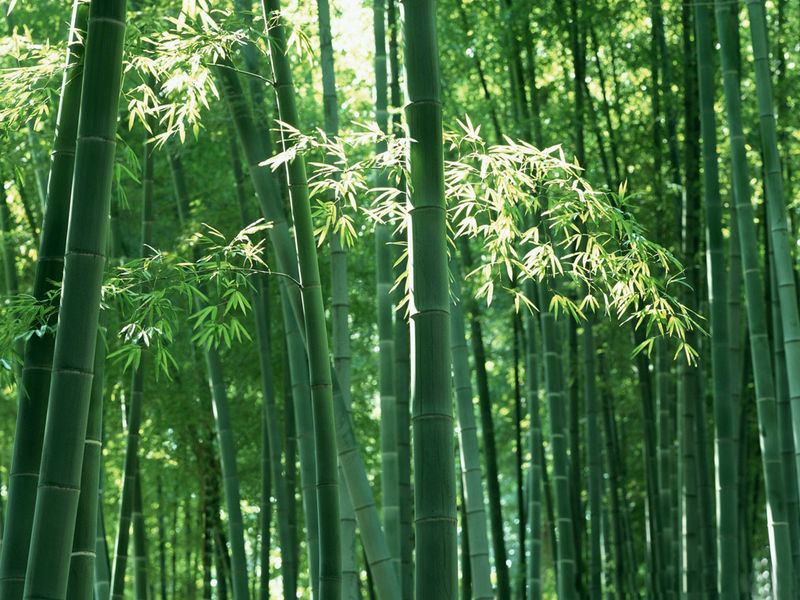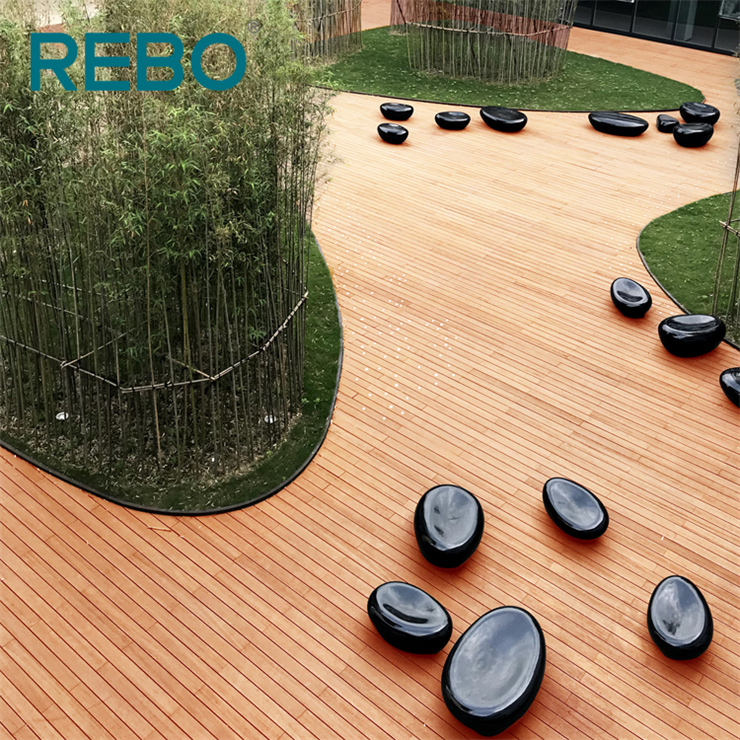Bamboo--an expert of environment protecting
Bamboo culture in China has a long history. From bamboo slips, bamboo paper, musical instruments to today's flooring and bamboo fiber products, bamboo plays a very important role in our daily life. Chinese people also have a special love for bamboo, and there are countless reputations for bamboo. Bamboo, pine, and plum are called the "three friends of the cold year", and are also called the "four gentlemen in the flower" together with plum, orchid and chrysanthemum. In the 21st century, bamboo has a new mission--to deal with climate change. Bamboo has the advantages of one-time planting and sustainable use, and has great potential in mitigating climate change, energy saving and emission reduction.

Great effect on carbon sequestration and emission reduction
Bamboo is the fastest growing plant in the world, and it makes two important contributions to energy conservation and emission reduction. Firstly, bamboo growth can reduce the total amount of carbon dioxide in the atmosphere. It takes only 2 to 3 months to be the bamboo with an average height of 10 to 30 meters, which has great potential for carbon sequestration. Moreover, the carbon sequestration effect of bamboo far exceeds that of trees. Generally speaking, trees need at least more than ten years of growth to be harvested, but bamboos only needs 4-6 years to be mature. A study estimated that one hectare of bamboo and its products can store 306 tons of carbon in 60 years, while the carbon storage of one hectare of fir forest under the same conditions is only 178 tons.
Secondly, making bamboo into daily necessities can stably store carbon and avoid rapid release into nature. Bamboo is made into durable crafts, flooring, building materials, etc., which can store a lot of carbon. Bamboo products not only do not emit carbon dioxide to the atmosphere, but also fix/reduce the carbon dioxide in the atmosphere. Compared with other high-emission building materials, the more bamboo is used, the greater its contribution to mitigating global climate change.
Multi-purpose for food, clothing, housing and transportation
Bamboo also has great potential in daily applications. More than a thousand years ago, Su Dongpo said that the magical uses of bamboo are endless. Bamboo branches, leaves, roots, stems and bamboo shoots can all be processed and utilized. Take moso bamboo as an example, bamboo shoots are edible; the strongest and thickest stems can be used for flooring and furniture; the thinner upper stems can be used for weaving, chopsticks, toothpicks; bamboo branches can be used as brooms; bamboo leaves can be used to extract flavonoids; The bamboo roots and processing waste can be burned into bamboo charcoal. According to some statistics, bamboo has more than 10,000 uses in terms of food, clothing, housing and transportation.
Nowadays, bamboo is known as "plant steel reinforcement". After technical processing, bamboo products can replace wood and other high-energy-consuming raw materials in many fields. But in general, our application of bamboo is not extensive enough.

Development and utilization must be supported
Compared to the tree logging, the development and utilization of bamboo forests will not damage the ecology. A bamboo forest usually grows bamboos with different ages, and mature bamboos are selected when cutting. This determines that bamboo forest harvesting often only cuts 1/5 or 1/3. The entire harvesting process does not delay the growth of other bamboos, which has little impact on the ecosystem, and will not damage the bamboo forest's ecosystem functions and wildlife habitat. A bamboo forest grows new bamboos every year, and it can be operated for decades or even hundreds of years if it is properly maintained. Some bamboo forests in China have grown for thousands of years and are still being developed and utilized.
China is a big country of bamboo, with abundant bamboo resources. There are more than 1,600 species of bamboo plants in the world, covering more than 45 million hectares. There are 652 species in 43 genera of bamboo in China, covering an area of 6.41 million hectares, of which 4.68 million hectares of moso bamboo. It is estimated that the amount of carbon fixed by bamboo vegetation, soil and litter in China's bamboo forest ecosystem accounts for 5.1% of China's entire forest carbon storage. In addition, as the world’s forest area has fallen sharply today, the global bamboo forest area is on the contrary continuously expanding, increasing at a rate of 3% every year, which means that bamboo forests are playing an increasingly important role.
However, bamboo is not perfect. In terms of geographic area, bamboo is a tropical and subtropical plant. Due to climatic conditions, it cannot maintain high yields in northern and severe cold regions. In terms of industrial development, the bamboo product market has not been developed sufficiently, and bamboo materials have more room to replace wood, cement, steel, and plastics. In terms of price, the cost of bamboo products is relatively high. It also requires enterprises to vigorously develop intelligent manufacturing to reduce labor demand and production costs. It also requires the state to issue export tax cuts or special fund support to further encourage enterprise development.
